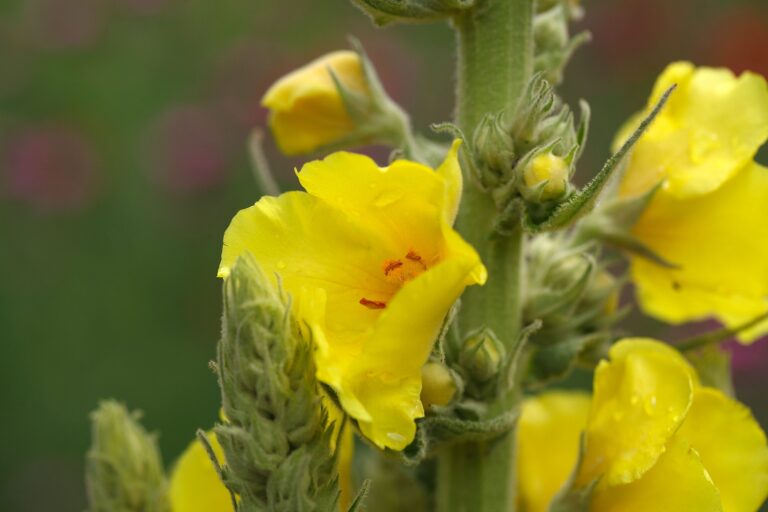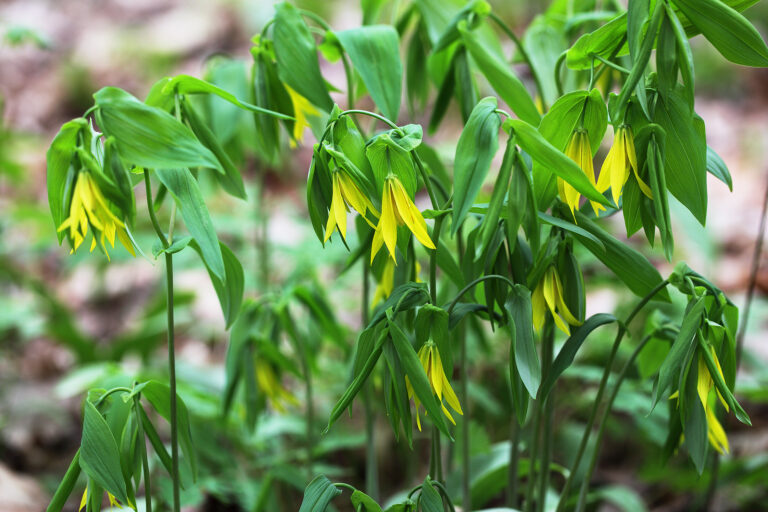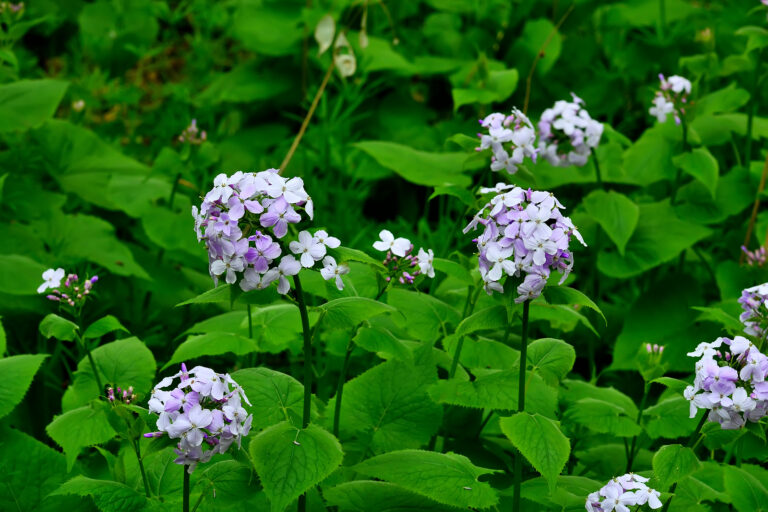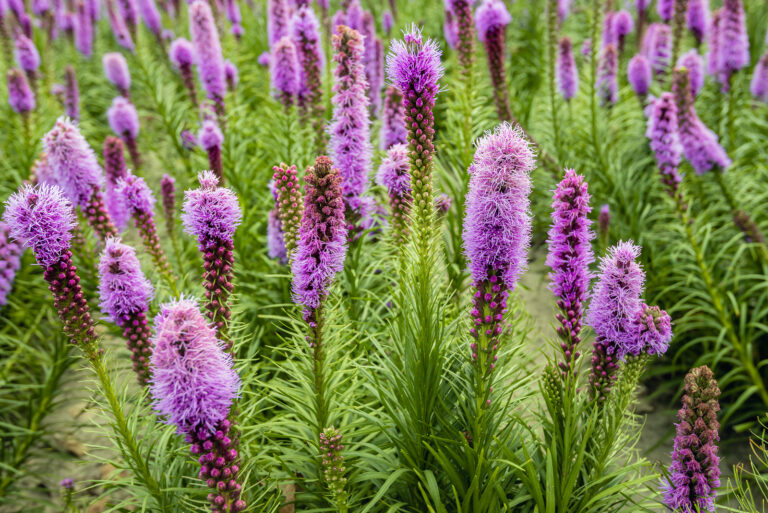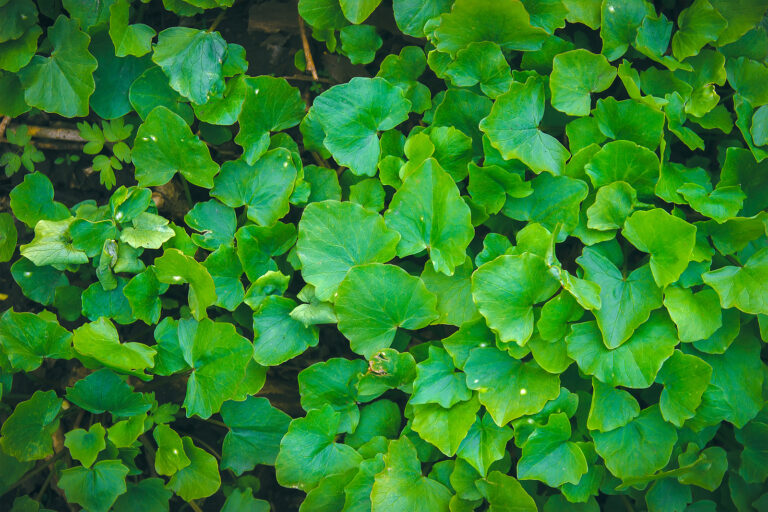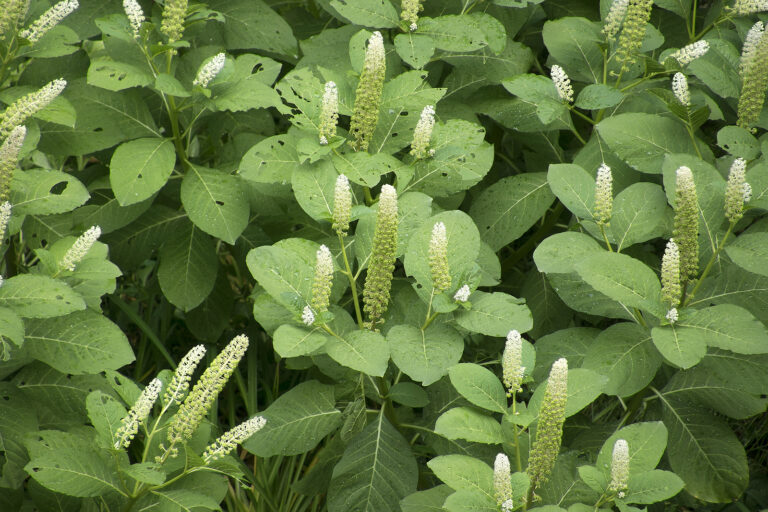How to Grow and Care for Peony — Paeonia
Peonies are hardy, long-lived mostly herbaceous perennials. They are grown for their showy, often fragrant flowers that resemble rose or camellia flowers. Peonies bloom once a year. Plants bloom for six or more continuous weeks.
Peony flowers are cup, bowl, or saucer-shaped. Single-flowered peonies have 5 to 10 petals surrounding a cluster of yellow or cream-colored stamens (called a boss). Double-flowered forms lack stamens or the stamens are not visible.
Garden Success Products at Amazon:
- 10 pcs Stainless Steel Garden Hand Tool Set
- Flexi Hose with 8-inch Nozzle
- Gorilla Cart 4 Cu. Ft, 300-pound Capacity
- Neem Bliss 100-% Cold Pressed Neem Oil
- Safer Brand Insect Killing Soap
- Wildflower Seed Mix Attracts Hummingbirds and Butterflies
- Eden Brothers All Perennial Seed Mix
The peony is an upright, clump-forming plant with lobed or divided green leaves. Some cultivars have fern-like leaves. The leaves grow on unbranched stems. The leaves turn crimson in autumn. Plants die back in autumn and reappear in spring as fleshy red shoots. Spring shoots must be protected from heavy frost.
Besides the clump-forming herbaceous perennial peonies, the Paeonia genus also includes several species of deciduous shrubs or subshrubs. These are called tree peonies. Tree peonies have woody stems and branches; they are shrubs, not trees. The blooms of tree peonies range from immense doubles to delicate singles.

Get to know Peony
- Plant type: Perennial
- Growing Zones and range: Zones to 8
- Hardiness: Hardy to -50°F (-46°C); withstands heat and cold, requires chilling winter
- Height and width: 24 to 36 inches (61-91cm) tall; 30 to 40 inches (76-101cm) wide
- Foliage: Mid to dark green or gray-green leaves, usually ovate to oval, sometimes linear
- Flowers: Rose or camellia-like large single or double blossoms
- Flower colors: Red, pink, lilac, cream, white
- Bloom time: Late spring and early summer
- Uses: Cut flowers, mixed borders, massed in beds
- Garden companions: bearded iris, oriental poppies, roses
- Common name: Peony
- Botanical name: Paeonia spp.
- Family: Paeibuaceae
- Origin: Europe to Eastern Asia, also Western North America
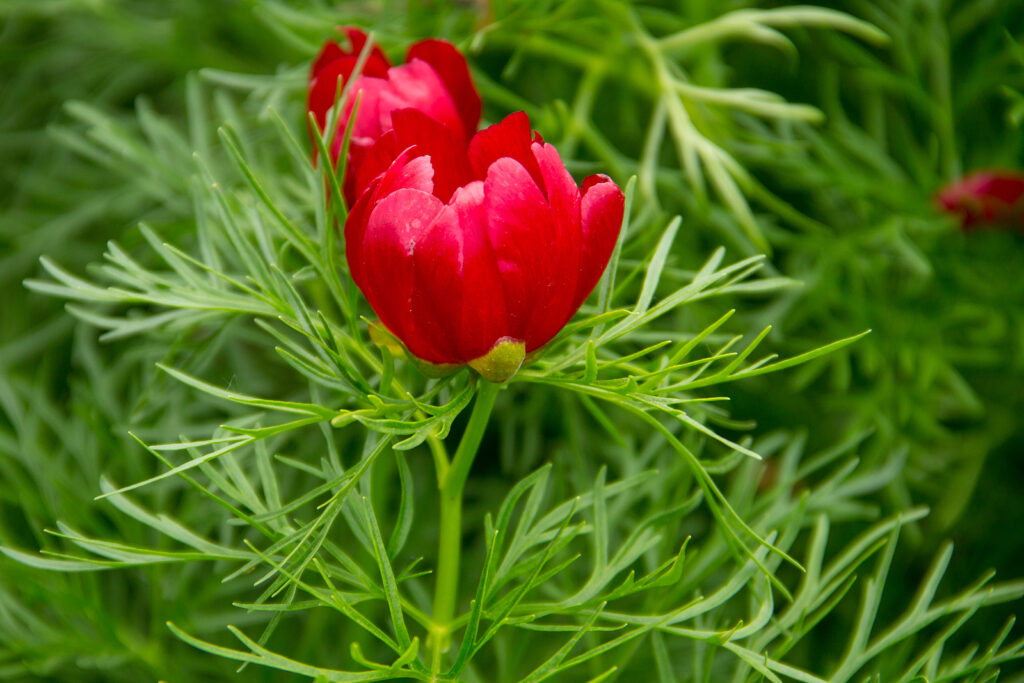
Where to plant Peony
- Plant peonies in full sun in Zones 2-6; plant in partial shade in hot regions, Zones 7-8.
- Grow peonies in humus-rich, well-drained soil.
- Peonies prefer a soil pH of 6.5 to 7.5.
Garden uses and companions
- Use peonies in a mixed, herbaceous, or shrub border.
- Use peonies as specimens in a formal or informal garden; plant peonies in drifts in large gardens.
- Peonies are excellent cut flowers.
- Good garden companions for peonies are Chrysanthemum superbum, Hemerocallis, Iris, Lupinus.
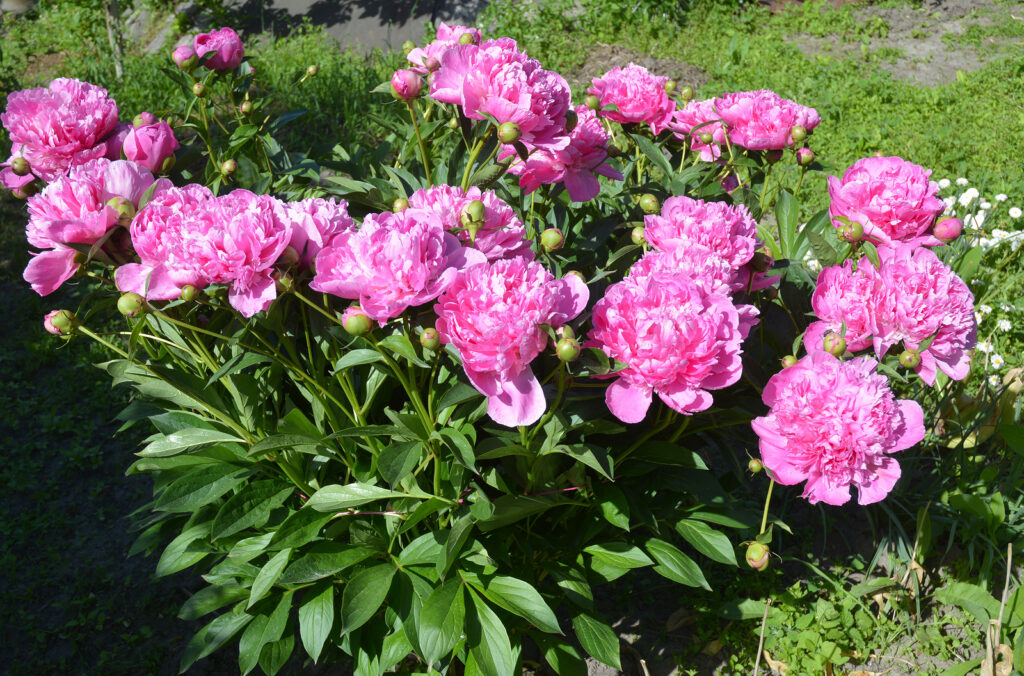
When to plant Peony
- Set container-grown peonies in the garden in spring in Zones 2-6; plant peonies in spring or fall in Zones 7-8. Add aged compost to the soil at planting time.
- Start seeds indoors after prechilling for 4 to 8 weeks in the freezer; sow seeds indoors 4 to 6 weeks before the last expected frost.
- Sow seeds outdoors in nursery beds in summer.
- Transplant seedlings that were grown in a greenhouse or outdoors to their permanent when they are 2 to 3 years old; transplant out in mid-spring.
- Established pot-grown plants can be set outdoors at any time of the year.
- Set divisions or dormant roots outdoors in early spring or in fall; fall is best in Zone 6 and warmer.
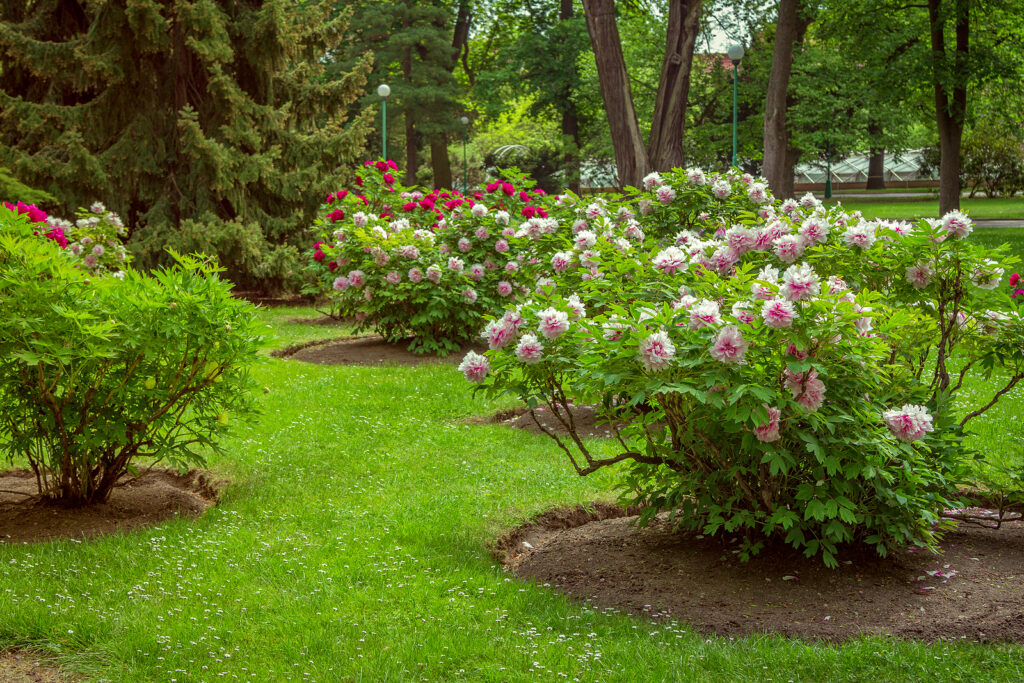
Planting and spacing Peony
- Sow prechilled seed in small pots or six-packs filled with moist potting soil; sow seed 1/4 inch deep. Keep at 60° to 70°F (15.6°-21°C) until seeds germinate which can take several weeks. If seeds do not germinate the first year, move them outdoors for another year. When seedlings are 4 inches (10cm) tall, move them outdoors.
- Seeds sown outdoors may not appear until the following year; sow seed 1/4 inch deep.
- Thin or transplant seedlings that were grown outdoors to their permanent spacing in mid-spring of the second or third year.
- Set divisions or dormant roots outdoors in spring or fall, fall is best in Zone 6 and warmer.
- Dormant roots are planted with the eyes facing upward and covered with 1 inch (2.5cm) of soil in Zones 7 and 8; cover with 2 inches (5cm) of soil in Zones 3 to 6.
- Plant divisions at the same depth at which they grew.
- Set pot-grown plants in the garden at the same depth at which they grew.
- It may take a year or two for plants to become established.
- Space peonies 30 to 40 inches (76-101cm) apart.
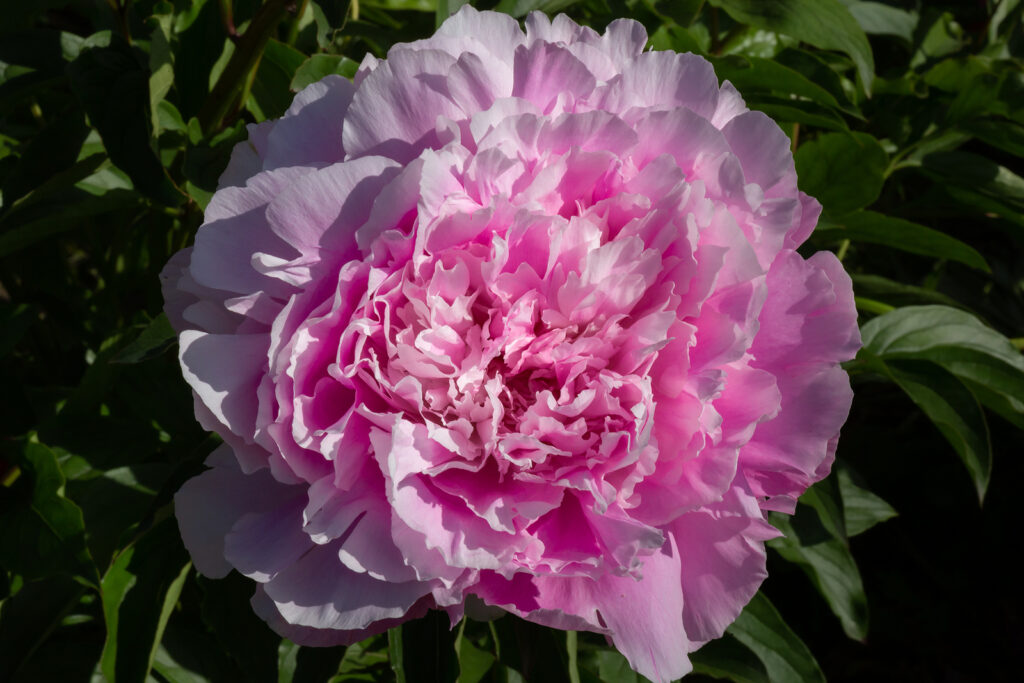
How to water and feed Peony
- Peonies need moderate to plentiful moisture. Water plants whenever the soil starts to dry out.
- Fertilize peonies lightly with all-purpose fertilizer at planting time and then every spring.
- Boost blossoms by applying a low-nitrogen, high-phosphorus, and -potassium fertilizer when plants have red shoots about 4 inches (10cm) tall.
- Fertilize peonies a second time each season after they bloom.
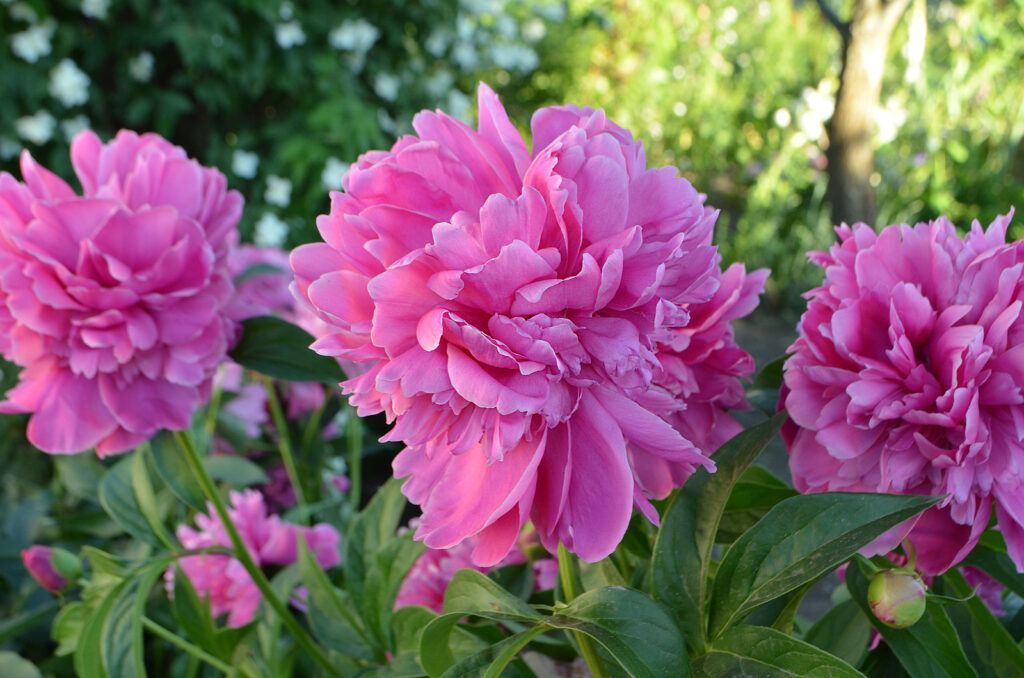
Peony care
- Mulch around peonies to conserve soil moisture.
- Peonies bloom 3 to 4 years after planting.
- Trim flowers after flowering unless you want seeds.
- Support plants as needed with peony hoops, stakes, or cages. Plants in full sun are less likely to need staking.
- Do not pinch back tips for bushiness; this will result in a loss of flowers.
- Disbud (remove side buds near the central bud) for the largest flowers; disbud before buds are 1/2 inch wide.
- Protect peonies in winter with several inches of mulch. Pull back the mulch in spring so shoots can emerge.
Peony pests and diseases
- Peonies are seldom bothered by pests and diseases.
- Remove and dispose of spent plants and debris in late fall to prevent diseases from overwintering in the garden.
- If blight (sooty fungus on leaves and buds) is a problem, remove and discard the affected portions of the plant as well as the top inch of the surrounding soil; replace with freshly limed topsoil.
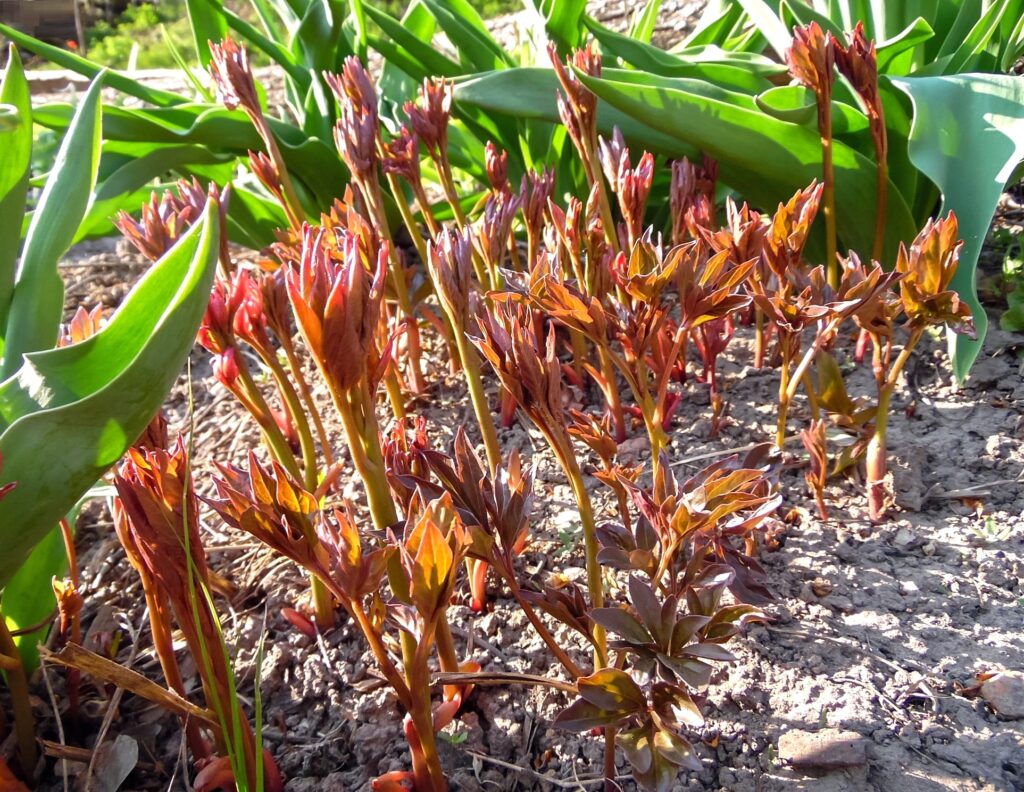
Peony propagation by division
- Established plants can be divided, although they prefer not to be disturbed.
- Prepare a planting hole for the division, about 2 feet wide and deep; enrich the hole with aged compost.
- Divide the plant with a straight-sided spade; make a clean, deep slice straight down through the center of the old clump. Each division should have at least 3 eyes on each side,
- Carefully lift the divisions and cut off rotted or jagged edges.
- Replant the divisions so that the eyes are 2 inches (5cm) below the top level of the soil; if you plant them too deeply, they will not bloom the next year.
- Firm soil around the plants and cover with 2 or 3 inches (5-7.6cm) of mulch for winter.
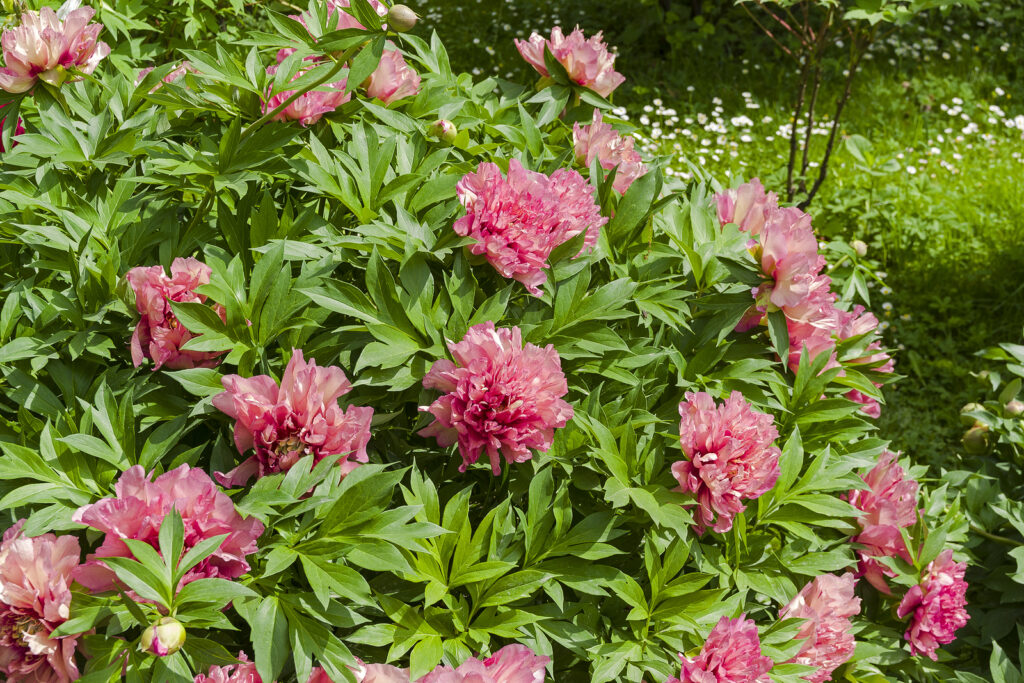
Peony varieties to grow
- Paeonia hybrids, common garden peony. The most commonly cultivated peonies are hybrids. They range in size from 18 to 36 inches (45-91cm) tall and wide. There are hundreds of cultivars in colors white, cream, pale yellow, pale pink, rose pink, crimson, and maroon. Flowers can be single, semidouble, double, or Japanese type with a ring of two petals around a cluster of petal-like stamens. Peonies with dense, rounded centers are called “bombs” or “anemones.” There are early, midseason, and late-blooming cultivars.
- P. lactiflora, Chinese peony. Popular spring-blooming garden peony. A parent of hybrid herbaceous peonies; it bears fragrant, 3- to 4-inch (7.5-10cm) wide flowers; blooms are usually white, but sometimes pink or red.
- P. officinalis, common peony, Memorial Day peony. A parent of hybrid herbaceous peonies; bears red or pink flowers in summer.
- P. suffruticosa, Moutan peony, tree peonies. This is a group of tree-peony hybrids. These peonies have been cross-bred in China for a thousand years or more.
- P. tenuifolia, fern leaf peony. Similar to Chinese peonies with finely divided fernlike leaves and single ruby-red flowers. This is an old-time favorite.
- Tree peonies grow to 5 feet (1.5m) tall. This category consists of herbaceous perennials, shrubs, and subshrubs that have been interbred for many centuries. Spring blossoms range from large doubles to small since and deeply incised leaves.
Peony frequently asked questions
Q: What type of soil is best for peonies?
A: Peonies will do well in any humus-rich, friable soil. Clay soil should be well drained and improved by the addition of aged compost and organic matter. Sandy soil also needs the addition of organic matter. Spade to a depth of 12 to 18 inches then add the organic material.
Q: Do peonies need lime?
A: Peonies grow best in slightly acidic soil, pH 5.5 to 6.5. If the pH is below 5, apply lime at a rate of five pounds per 100 square feet.
Q: Should I fertilize peonies?
A: Give peonies a balanced organic fertilizer rich in phosphorus such as 5-10-5.
Q: How deep do peonies need to be planted?
A: The crown, from which the buds arise, should be only one to two inches below the soil level. If planted too deeply, peonies will not bloom for many years.
Q: How are peonies divided?
A: Dig the clumps carefully so as not to injure the roots. Wash off the soil. Use a heavy knife to cut each clump into several pieces. Each division should have several plump buds. Roots without buds rarely produce new plants. Peonies usually need dividing every five to eight years.
Q: Why do peonies fail to bloom?
A: There are a few conditions that will prevent peonies from blooming; too deep planting; too much shade; poor drainage; need dividing; root disease; botrytis blight disease; roots infested with nematodes; lack of fertilizer; lack of moisture; lack of sunlight; frost injury to buds.
Q: Should I disbud my peonies?
A: A peony stem usually has from three to seven buds. The main, terminal bud produces the largest flower. If you want this bud to produce a spectacular flower, pick off the other buds on the stem. disbud as soon as the secondary buds become visible


